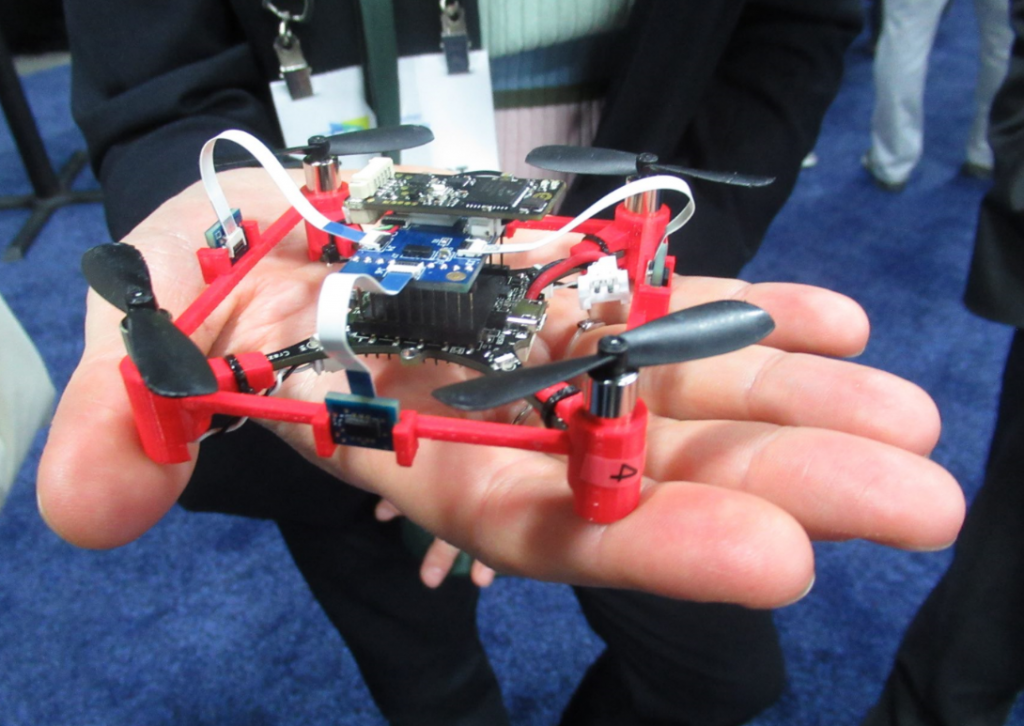I’m always curious about what goes on at CES, the mega consumer electronics show held in Las Vegas every January. Consumer is not the market that Critical Link typically plays in, but the types of technology that make their way into consumer applications are the types of technology that make their way into industrial and scientific applications. Sure, the scale is different. The power, performance, availability, and security requirements are different. And no one who develops industrial-strength applications builds in obsolescence in hopes that users will trade up in a couple of years. Still, the technology trends are similar. And those consumer apps are certainly interesting.
Anyway, I got to attend CES 2018 vicariously by reading about it, including an article by Junko Yoshida on EE Times, who poked around the CES Unveiled showcase to see what’s up. He found:
Above all, a common thread among the many gadgets “unveiled” is “sensing.” Afoot is an escalating race for not just many more, but higher performance sensors to be embedded everywhere.
Sensing, eh? As I said, there’s plenty of commonality between consumer technology and industrial technology and, at Critical Link, Sensors ‘R’ Us, pretty much.
Here’s what caught Junko’s eye at the show:
Consumer Physics has come up with the SCiO. This device – near-infrared spectroscopy that relies on LED light – is aimed at making grocery shopping smarter by sensing the fat, sugar, water and protein content of food. Prepared foods, of course, provide details on calories and contents, but SCiO will work with fresh foods, which will help gauge freshness. Guess this means that the old ways – like sniffing and touching the cantaloupe – will become lost arts, like reading a map.
And speaking of sniffing, Sniffy, a prototype “embedded with a camera, a touch screen and a host of test tubes packed with olfactory stimuli” can analyze shoppers’ reactions to odors, which are triggers for emotional reactions, and can “generate big data that can be used for marketing.”
Debussy is a high-end headset from Funky Sound Studio. It’s a “smartphone inside a headphone” and uses ARM Cortex processors. Not the same ones we have in our MitySOM-5Csx, but as I said, the technology in consumer apps and industrial apps tends to differ in degree rather than kind. No pricing available yet, but, let’s face it, the word “luxury” gives us a hint.
3DRudder demo’d a foot-operated joystick to be used to immerse yourself in VR. The 3DRudder would take care of the pushing, tilting and rotating motions, while the hand controller would be dedicated to shooting, grabbing, and hitting. There’s also a wireless VR system from Display Link Corporation.
The Relync mobility looks like assistive technology at its best: a portable scooter that folds up into the size of a suitcase. Looks like folks who rely on scooters to get around will have an option that’s a lot less cumbersome, certainly making travel easier.
I’m really intrigued by what French research institute CEA Leti’s up to:
This year, CEA-Leti is applying [their low-power sensor] fusion to the first 3D anti-crash solutio n embedded in a drone…a tiny drone embedded with six lidars, a camera and radar that fits on [someone’s] palm…The key here is that this 360 Fusion can fit into a low-cost, mass-market micro, such as STMicroelectronics STM32. This miniature drone with integrated with perception solution weighs less than 40 grams.
n embedded in a drone…a tiny drone embedded with six lidars, a camera and radar that fits on [someone’s] palm…The key here is that this 360 Fusion can fit into a low-cost, mass-market micro, such as STMicroelectronics STM32. This miniature drone with integrated with perception solution weighs less than 40 grams.
With more and more drones taking to the skies, anti-collision technology is most welcome.
While it’s being demo’d at a consumer show, the Acute Angle PC is geared toward the enterprise. This PC “can work during off hours as a mining machine for a decentralized public blockchain platform. The Acute Angle PC works for Acute Angle Cloud, a globally distributed Location as a service (LaaS) platform.”
Back to more consumer-oriented gadgets, the SGNL watchband vibrates when you get a phone call on your mobile, which you can then answer by just “putting your finger to your ear.” And Buddy is a robot that watches the kids. Not sure I would have trusted my kids to a robot babysitter. But I might trust Caveasy, a smart wine rack that lets you snap a picture of the labels on your bottles and then advise you on when it will be best to drink it and what food it will go best with.
And all I can say about the Aurasens lounge chair that “penetrates your senses with Mozart and Manilow” is that, at $22K, there won’t be one in my den anytime soon.
Thanks, Junko, for letting me see what I’m missing at CES 2018.
